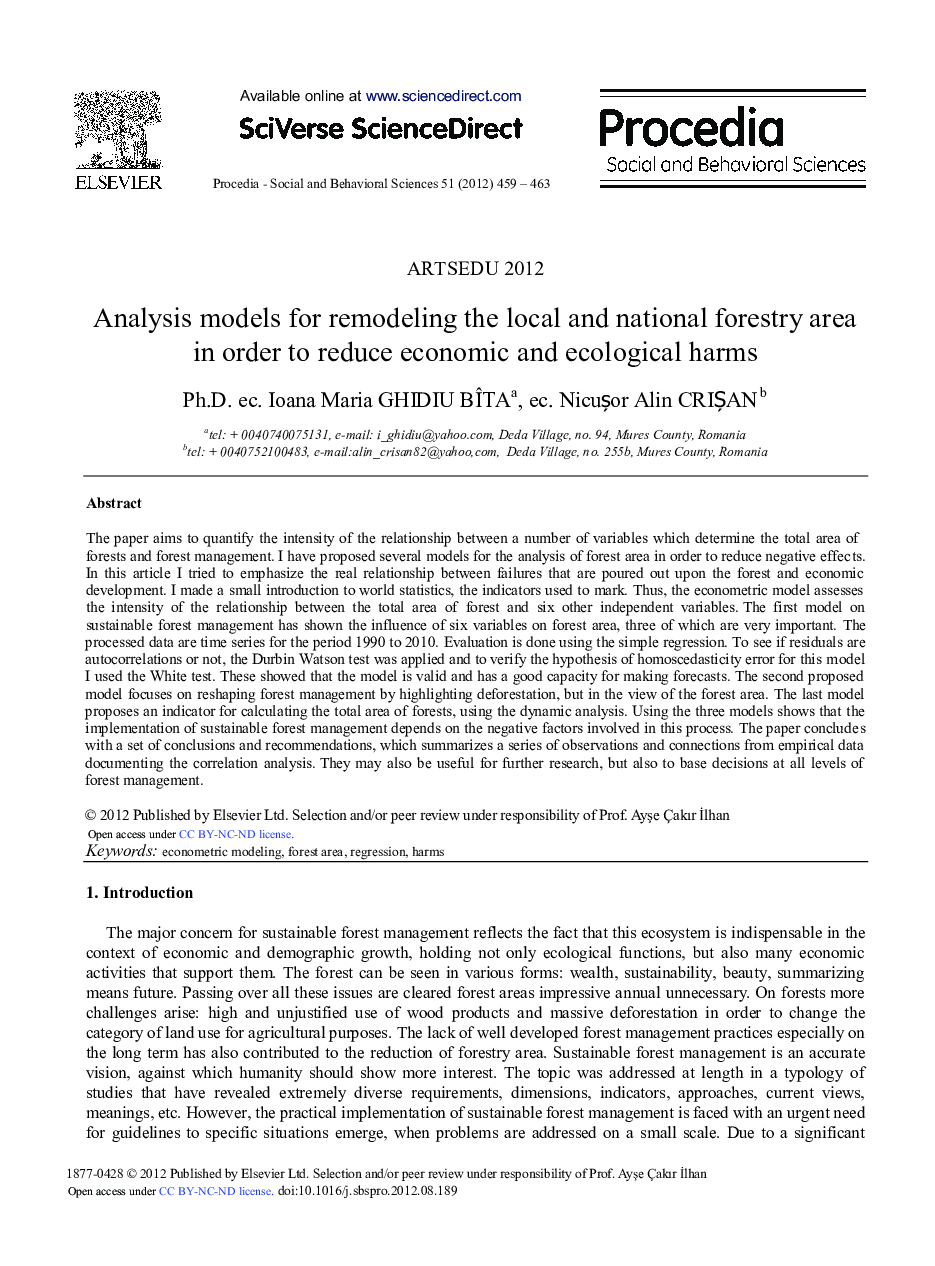| Article ID | Journal | Published Year | Pages | File Type |
|---|---|---|---|---|
| 1121020 | Procedia - Social and Behavioral Sciences | 2012 | 5 Pages |
The paper aims to quantify the intensity of the relationship between a number of variables which determine the total area of forests and forest management. I have proposed several models for the analysis of forest area in order to reduce negative effects. In this article I tried to emphasize the real relationship between failures that are poured out upon the forest and economic development. I made a small introduction to world statistics, the indicators used to mark. Thus, the econometric model assesses the intensity of the relationship between the total area of forest and six other independent variables. The first model on sustainable forest management has shown the influence of six variables on forest area, three of which are very important. The processed data are time series for the period 1990 to 2010. Evaluation is done using the simple regression. To see if residuals are autocorrelations or not, the Durbin Watson test was applied and to verify the hypothesis of homoscedasticity error for this model I used the White test. These showed that the model is valid and has a good capacity for making forecasts. The second proposed model focuses on reshaping forest management by highlighting deforestation, but in the view of the forest area. The last model proposes an indicator for calculating the total area of forests, using the dynamic analysis. Using the three models shows that the implementation of sustainable forest management depends on the negative factors involved in this process. The paper concludes with a set of conclusions and recommendations, which summarizes a series of observations and connections from empirical data documenting the correlation analysis. They may also be useful for further research, but also to base decisions at all levels of forest management.
